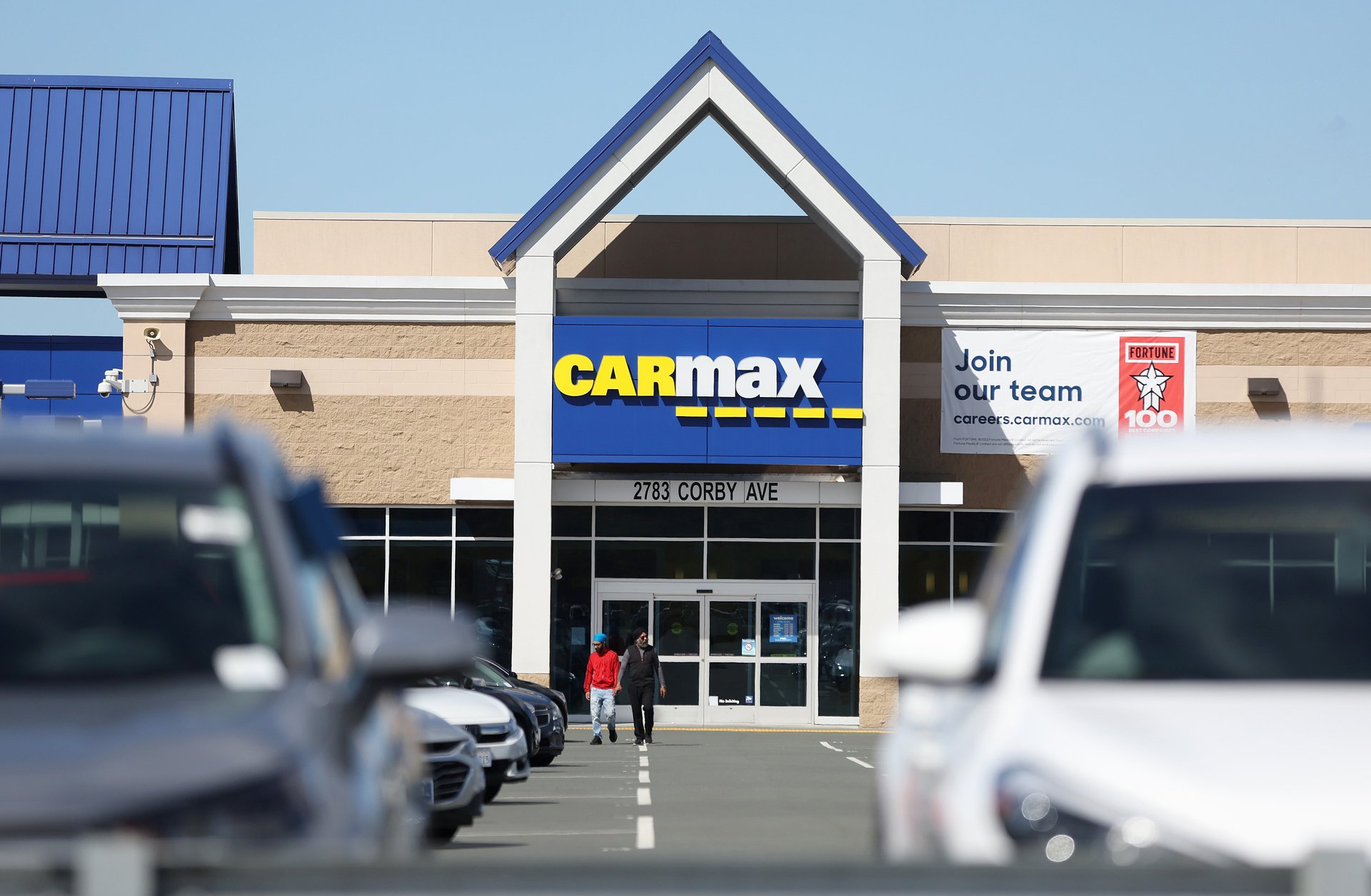Used car stocks crash as demand flags and Goldman Sachs slashes autos outlook
CarMax stock fell almost 20%, Carvana slumped 9%, and Goldman warned that new car prices could spike $4,000

The U.S. auto sector is taking a beating.
Suggested Reading
After CarMax (KMX) missed earnings expectations, its shares plunged nearly 20% Thursday afternoon, marking one of the company’s steepest single-day losses since early in the COVID-19 pandemic. As analysts flagged the mounting pressure on the used vehicle market, Carvana (CVNA) dropped 9%.
Related Content
The drops came just as Goldman Sachs (GS) cut its 2025 forecast for U.S. auto sales by nearly a million units, citing softening demand and the rising cost burden from President Donald Trump’s proposed tariffs on Chinese imports. While the administration announced a 90-day pause on some duties, levies on autos, steel, and aluminum remain in place — spooking investors and sharply sending shares of Ford (F), GM (GM), and Stellantis (STLA) lower.
Goldman predicts new car prices to rise by $2,000-$4,000
“We believe the tariffs as proposed will raise the cost of both importing and manufacturing vehicles in the U.S. by at least a low to mid single digit thousand dollar level on average,” Goldman analysts wrote, estimating new car prices could rise $2,000-$4,000 in the next year.
That price jump could prove hard to pass on, especially with demand already cooling.
CarMax’s latest quarterly results reinforced that strain. While revenue rose 6.7% year-over-year to $6 billion and used-unit comps climbed 5.1%, earnings per share came in at $0.58 — falling short of the $0.66 analysts expected.
According to a note from William Blair, about $0.06 of the miss stemmed from a write-down in its Edmunds unit, but investors appear more focused on the bigger picture: cautious consumers, tighter credit, and weakening pricing power. CarMax Auto Finance reported income growth and improving credit quality, but that wasn’t enough to offset concerns about the sustainability of demand.
Tariffs cloud the road ahead
As high-rate pressure collides with tariff-driven inflation, the outlook for the broader auto market is clouding fast. Goldman also cut its 2026 U.S. auto sales forecast by 1.1 million units and trimmed global production estimates for 2025 and 2026 by a combined 3.6 million units.
In short: The auto industry is entering a rough patch — where inventory isn’t the problem, but affordability is.